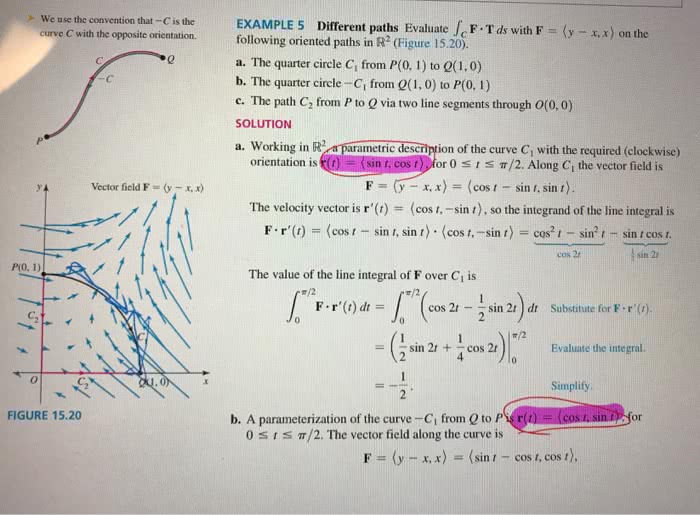1) Find the equation of the plane which contains the line r(t) =i + (3 + t)j + (2 + t)k and
the point <3, 2, 1> and the equation of a parallel planewhich passes through (0, 0, 1).
2) Find the arc length of the curve given by r(t) = <e^t,e^-t, t>, between the points (1,1,0) and (2, 1/2,sqrt(2)*ln(2))
3) Conside the ellipse (x^2/a^2) + (y^2/b^2) = 1 where 0 < a< b. Find the points on the ellipse at which the maximum andminimum values of curvature are attained, and give thosevalues.
4) Prove a (precise, including hypotheses) theorem forintegration by parts in vector calculus which tells you how tocompute definite integrals of cross products. You may assume theFundamental Theorem of Calculus, which states that if r(t) is acontinuous vector-valued function and R is any antiderivative of r,then
Integral a to b r(t)dt= R(b)-R(a)
Your theorem should be able to solve the integral in the nextproblem.
5)Computer Integral 0 to pi <t, t, 0> x <cos(t),-cos(t), cos(2t)> dt
6)
Find all differentiable vector-valued functions with threecomponents which satisfy the equation r'(t)= r(t) (i.e. solve thedifferential equation). Find all solutions which have r(0) = <1,2, 3> if any exist.
1) Find the equation of the plane which contains the line r(t) =i + (3 + t)j + (2 + t)k and
the point <3, 2, 1> and the equation of a parallel planewhich passes through (0, 0, 1).
2) Find the arc length of the curve given by r(t) = <e^t,e^-t, t>, between the points (1,1,0) and (2, 1/2,sqrt(2)*ln(2))
3) Conside the ellipse (x^2/a^2) + (y^2/b^2) = 1 where 0 < a< b. Find the points on the ellipse at which the maximum andminimum values of curvature are attained, and give thosevalues.
4) Prove a (precise, including hypotheses) theorem forintegration by parts in vector calculus which tells you how tocompute definite integrals of cross products. You may assume theFundamental Theorem of Calculus, which states that if r(t) is acontinuous vector-valued function and R is any antiderivative of r,then
Integral a to b r(t)dt= R(b)-R(a)
Your theorem should be able to solve the integral in the nextproblem.
5)Computer Integral 0 to pi <t, t, 0> x <cos(t),-cos(t), cos(2t)> dt
6)
Find all differentiable vector-valued functions with threecomponents which satisfy the equation r'(t)= r(t) (i.e. solve thedifferential equation). Find all solutions which have r(0) = <1,2, 3> if any exist.


